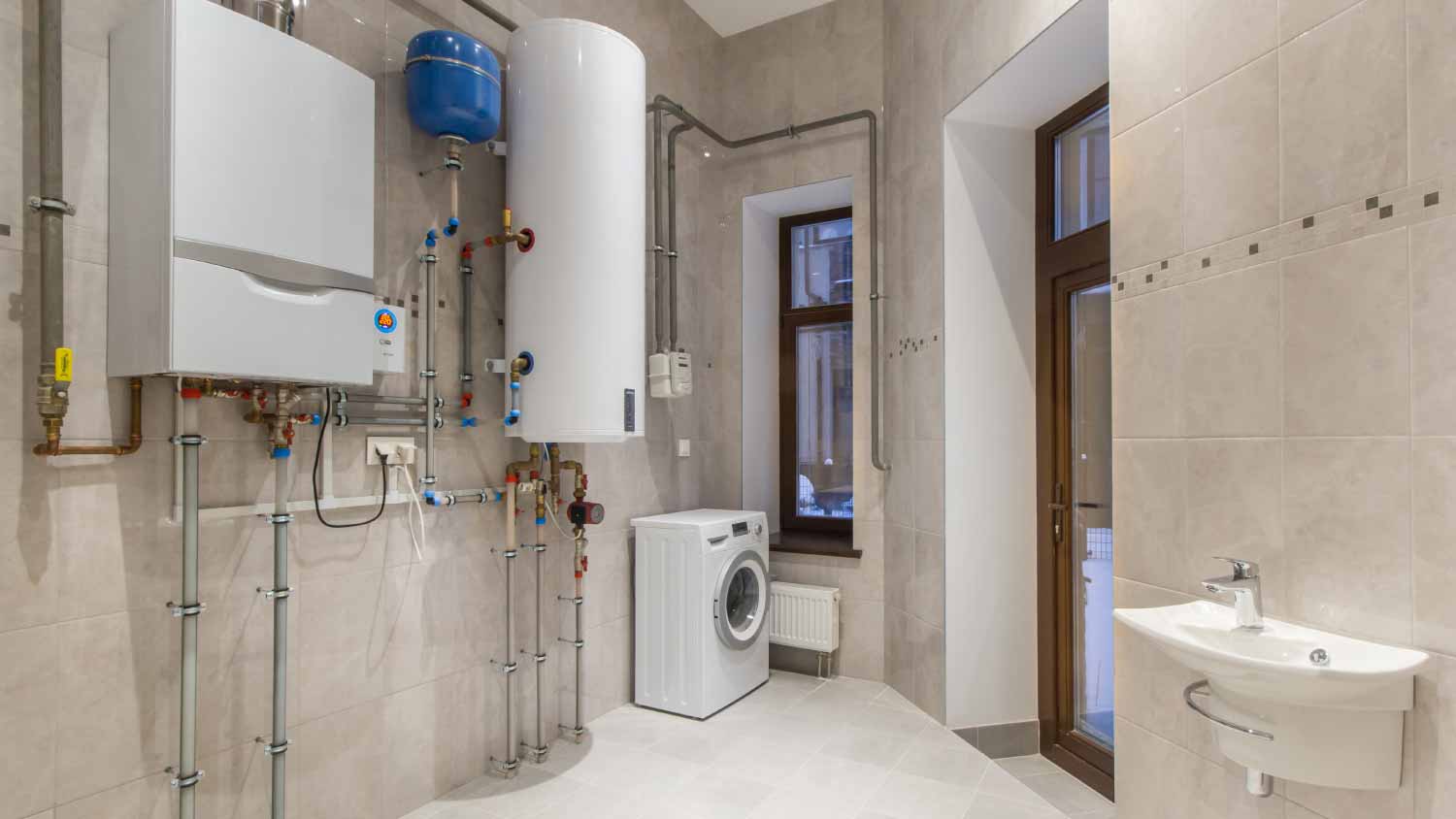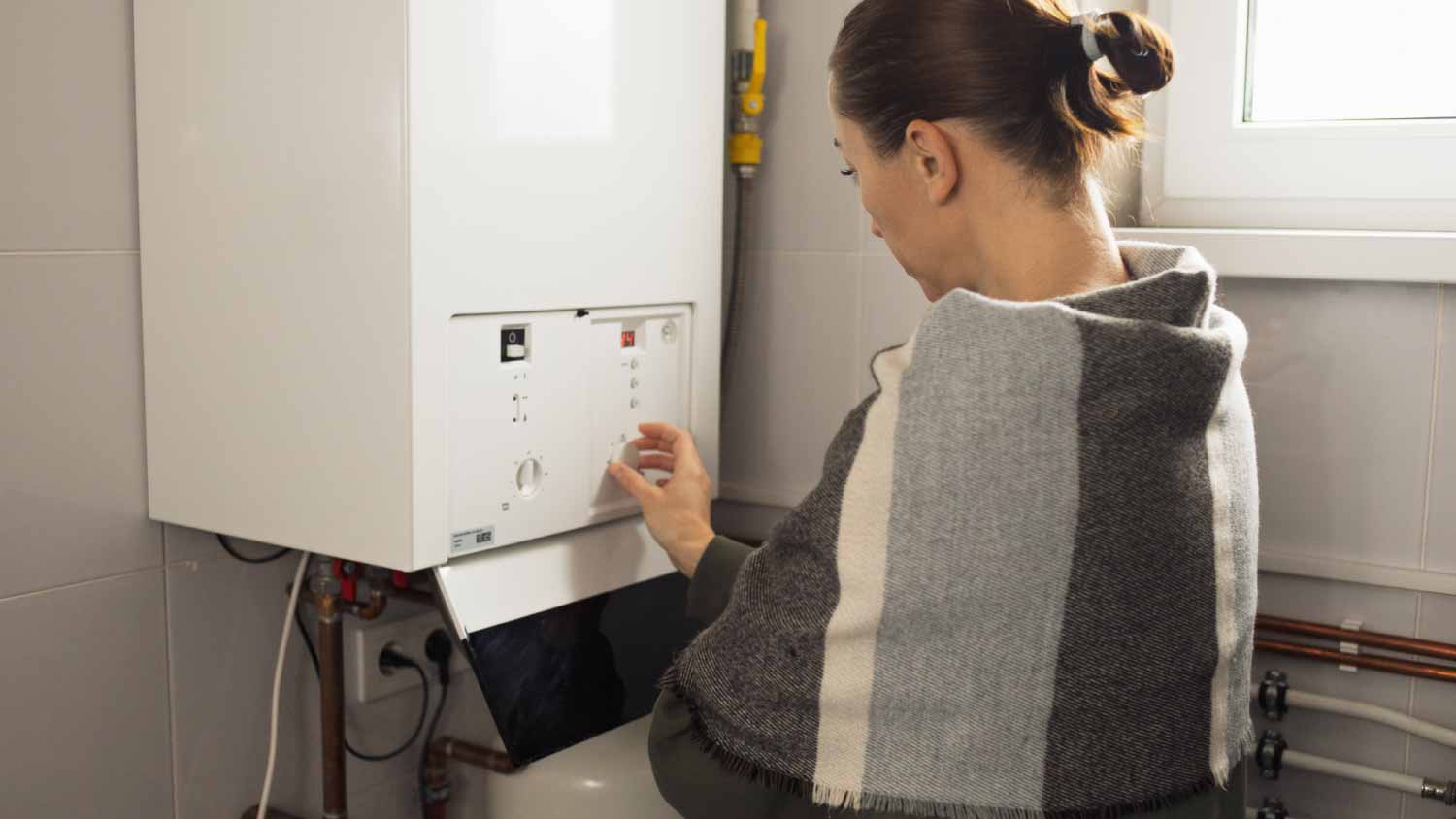
Tankless water heater costs depend on the size of your water heater, location, fuel type, and more. Keep reading to calculate your expenses.
Don’t let the pressure get to you


A hot water tank relief valve, also known as a temperature and pressure (T&P) valve, releases excess pressure and heat from your water heater.
The relief valve is triggered by water temperatures surpassing 210 degrees Fahrenheit or pressure exceeding 150 psi.
To operate efficiently, a water heater should be set between 120 to 140 degrees Fahrenheit.
The cost to replace a hot water tank relief valve ranges between $75 and $150, including labor.
A licensed plumber or water heater professional can diagnose and fix issues with your water heater and its components.
A leaking hot water tank relief valve can be a real headache. While it might seem minor, it could be a sign that something’s really wrong with your water heater. But don’t crack under the pressure—or heat. Understanding why your relief valve might be leaking is the first step toward solving the problem and avoiding any potential water damage (or worse). In this article, we’ll dive into three reasons behind leaking relief valves and how to fix them.

Your hot water tank relief valve, also known as the T&P (Temperature and Pressure) valve, is a small but crucial safety device in your water heater. It’s like the guardian of your tank, working tirelessly to keep things safe by managing and releasing excess pressure and heat. Without it, you could face serious issues, like leaks or even a water heater explosion.
Here’s how it works: You’ll usually find the T&P valve on the top or side of your water heater. It’s connected to a discharge tube that extends a few inches above the floor. This tube directs steam and hot water safely away from the tank. The valve is designed to open only when needed—specifically, if the water temperature climbs above 210 degrees Fahrenheit or if the pressure exceeds 150 pounds per square inch (psi). If these limits are reached, the valve opens to release the excess hot water and steam, which helps reduce the temperature and pressure back to safe levels. Once things are back in check, the valve closes.
Regular maintenance and testing of your T&P valve are key to ensuring it functions properly and keeps your home safe from potential water damage and other serious problems. A malfunctioning valve, like one that leaks, can lead to dangerous pressure build-up and major damage. So, giving your hot water tank relief valve some attention can help prevent major water heater issues and keep it running smoothly.
As your water heats up, the pressure inside the tank naturally rises. If your hot water tank relief valve is leaking, it’s a clear sign that there’s too much pressure building up inside the tank. Picture the relief valve as the bouncer at the hottest (pun intended) nightclub in town—their job is to keep things, like the crowd and maximum occupancy, under control. Similarly, the relief valve steps in to manage pressure by opening up and letting out excess steam and hot water if things get too heated. But if the pressure surpasses what the valve can handle, it might not close properly after opening, which can cause it to leak.
To troubleshoot, start by checking your water heater’s temperature settings. Next, inspect the relief valve for any visible signs of damage or corrosion. Although these tasks are simple enough, if you’re not comfortable performing these checks yourself or if the valve continues to leak despite your best efforts, it’s a good idea to call in your local water heater professional. They can diagnose the issue and ensure your water heater is operating safely and efficiently.
Excessive temperatures can also cause your hot water tank relief valve to leak, much like too much pressure can. When the water temperature inside the tank gets too high—usually above 210 degrees Fahrenheit—the pressure can rise beyond what the relief valve can handle. In turn, the valve opens to release the excess steam and hot water, lowering the pressure. However, if the temperature stays high for too long or if the valve is faulty, it might continue to leak even after it’s done its job.
If your relief valve is leaking because of excess temperatures, start with the same troubleshooting steps you’d use for pressure issues. First, check the thermostat settings on your water heater and make sure they’re set between 120 and 140 degrees Fahrenheit. If they’re higher, this adjustment can prevent the pressure levels from getting too high and help stop the leaking.
If you’ve ruled out excessive pressure and high temperatures as the cause of your leaking relief valve, it’s likely time to consider a faulty valve. Besides the usual wear and tear, there are several other reasons why your T&P valve might be acting up.
As your water heater works, minerals and sediment from the water can gradually collect around the relief valve. This build-up can keep the valve from closing properly, leading to leaks. Additionally, constant exposure to hot water and steam can cause the valve components to corrode over time. This weakens the valve, making it less responsive to pressure changes and more likely to leak.
Adjusting the thermostat settings won’t fix a faulty valve. Instead, inspect it for signs of damage or corrosion and test it. If it’s damaged or doesn’t work properly after testing, it’s time for a replacement. It’s far better to replace the relief valve for $75 to $150 (including labor) than $1,324, the average cost to replace and install a new water heater.
Remember—a malfunctioning water heater can lead to serious problems, like your water heater exploding. If you’re unsure about diagnosing or fixing the issue yourself, it’s always a good idea to call a professional, like a plumber or water heater professional. Not only can they accurately identify the problem, but they can also make sure your water heater isn’t battling any other issues.
From average costs to expert advice, get all the answers you need to get your job done.

Tankless water heater costs depend on the size of your water heater, location, fuel type, and more. Keep reading to calculate your expenses.

Looking to replace or upgrade your water heater? Use this water heater replacement cost guide to see what the work will cost and what factors affect your total.

Tankless water heater costs in Columbus, OH depend on the size of your water heater, location, fuel type, and more. Keep reading to calculate your expenses.

The time it takes to drain a water heater varies by system. This article provides the details and explains what to do if your water heater is draining slowly.

How long does a gas water heater last? Most last eight to 12 years, though some can last up to 15 years with proper maintenance.

If your water heater is getting warm but not hot, a faulty thermostat, sediment, or more could be to blame. Learn how to spot and solve the problem of a water heater that’s not hot enough.